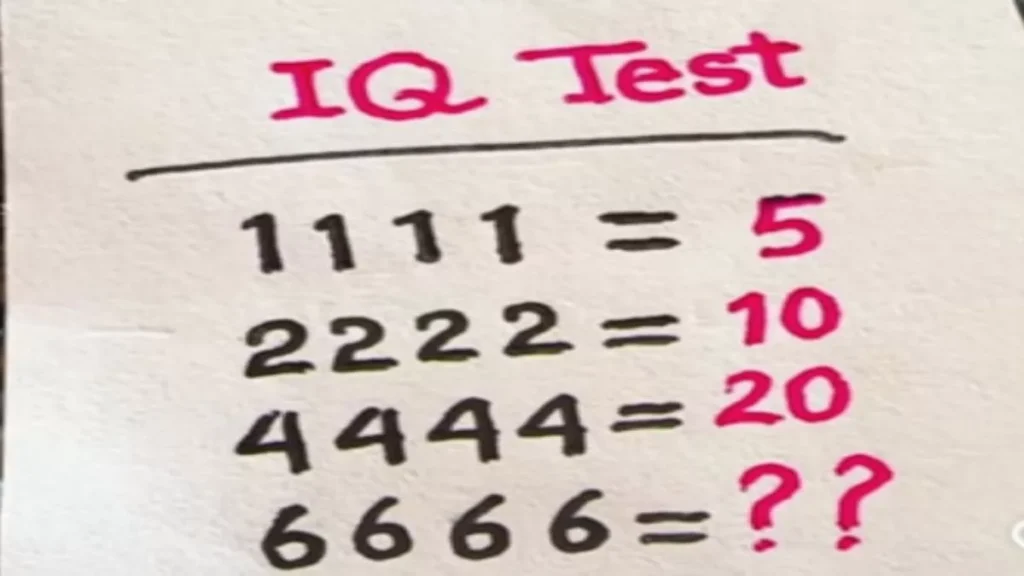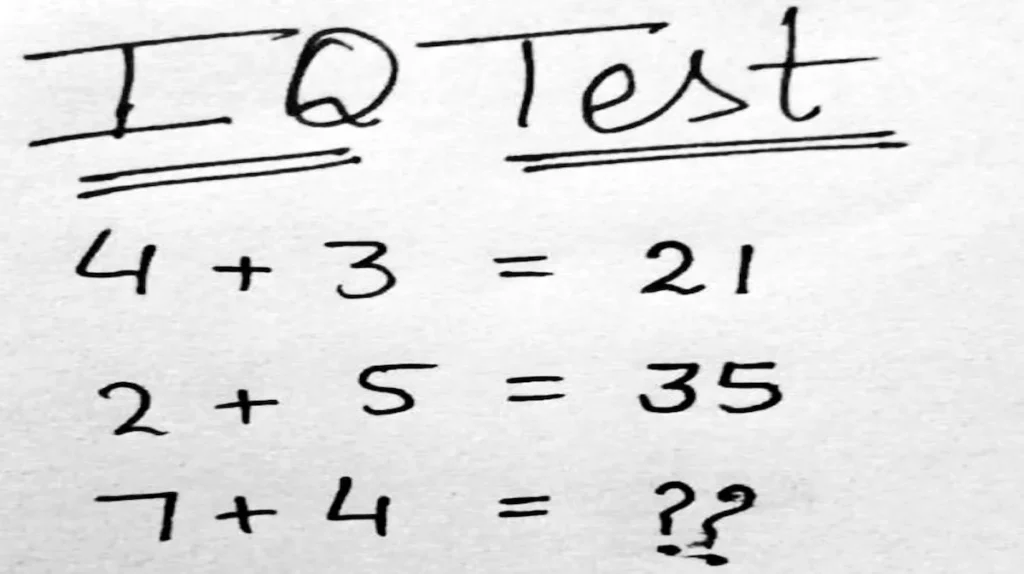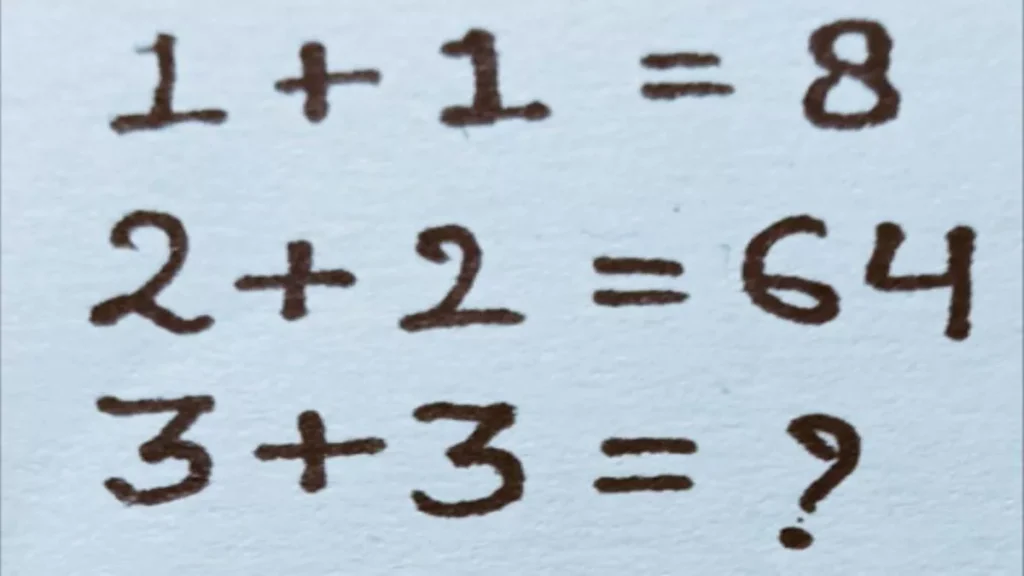A Viral Puzzle Leaves the Internet Perplexed
A math puzzle has recently caused confusion on social media. Since its publication, users have been striving to decipher the pattern behind this bewildering riddle. Puzzles have always fascinated internet users: they are more than just pastimes; they stimulate critical thinking and provide a unique satisfaction when solved.
Especially when they involve numbers, these challenges can seem deceptively simple, while concealing unexpected logic. If you enjoy tackling complex mathematical riddles, a new challenge is currently trending online.
The Challenge That’s Taking Social Media by Storm
Widely shared across social platforms, the puzzle is presented as follows:
“IQ Test: 1111 = 5, 2222 = 10, 4444 = 20, 6666 = ??”
Published on April 7, this challenge quickly captured attention, accumulating over 17,000 views and more than 600 comments. Yet, no hints or solutions have been provided.
Internet Users Dive into the Riddle
On the platform X (formerly Twitter), users swiftly began to share their theories and guesses.
One user confidently claims: “It’s 30.”
Another, less certain, adds: “Um, maybe 60?”
A third jokes: “This gives me math trauma from school.”
Some suggest a logical approach: “Just add the digits and multiply by the number of digits.”
Others remain skeptical, proposing varied answers like 40, 25, or simply:
“I give up.”
There are even those questioning the very foundation of the riddle: “Is it really necessary for this to make sense?”
The diversity of answers, swinging between confidence, humor, and resignation, illustrates just how captivating… yet bewildering, this type of puzzle can be.
Why Are These Riddles So Fascinating?
So, why do these challenges achieve such popularity?
The answer may lie in the collective experience they provide.
Puzzles offer a moment of reflection, friendly competition, and sometimes shared frustration.
Solving the riddle isn’t necessarily the main objective; participating in the quest, discussing it, and confronting ideas with others… this is what makes these moments so engaging.
In a world where information rushes by at lightning speed, taking a break to challenge one’s brain is a refreshing experience.
And when the whole internet attempts to solve a challenge, it’s no longer just about finding the answer but relishing the thrill of collective reasoning.
Have you succeeded?
Let’s move on to our answer…
Here’s the Answer We Found:
“IQ Test: 1111 = 5, 2222 = 10, 4444 = 20, 6666 = ??”
Let’s analyze each expression to identify a logical pattern.
Starting with 1111 = 5.
The digits are: 1, 1, 1, 1.
We note that there are four “1s.”
Each “1” could represent a certain value.
However, let’s first check if we can associate each digit with a fixed value.
Hypothesis: let’s add the digits.
1 + 1 + 1 + 1 = 4 → but the given result is 5.
Thus, simple addition doesn’t work.
Let’s try something else: what if each digit had a different value?
Now look at 2222 = 10.
2 + 2 + 2 + 2 = 8 → still not 10.
And 4444 = 20.
4 + 4 + 4 + 4 = 16 → but the result is 20.
It appears that the result is consistently higher than the sum of the digits.
What if we tried another approach? Perhaps the logic is:
(we count the number of bars in the digit’s writing).
Let’s examine each digit and the number of strokes or segments in their written form (like on a 7-segment calculator display).
- The digit 1 has 2 segments.
- The digit 2 has 5 segments.
- The digit 4 has 4 segments.
- The digit 6 has 6 segments.
Let’s test this idea with 1111:
Each “1” has 2 segments → 2 × 4 = 8 → but the result is 5, so that doesn’t fit.
Let’s explore another track. What if it were a simple product?
2222 = 2 + 2 + 2 + 2 = 8, but the given result = 10 → a difference of +2.
4444 = 4 + 4 + 4 + 4 = 16, result = 20 → a difference of +4.
1111 = 1 + 1 + 1 + 1 = 4, result = 5 → a difference of +1.
It appears we’re adding a specific number depending on the digit used:
- 1111: sum = 4 → result = 5 → +1
- 2222: sum = 8 → result = 10 → +2
- 4444: sum = 16 → result = 20 → +4
So it seems we add the value of the digit used only once.
The formula appears to be:
(sum of the digits) + (value of the unique digit used)
Let’s apply that to 6666:
6 + 6 + 6 + 6 = 24
Now add 6 → 24 + 6 = 30
Therefore, the answer could be: 30
✅ The possible final answer: 6666 = 30
And remember, if you don’t want to keep having fun with tests and challenges, definitely don’t click here.







